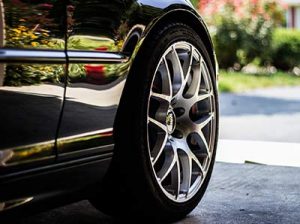 In our last blog post, we revealed that nationally, only 62.1% of vehicles pass their MOT test first time. According to our calculations, that means that a staggering 11 million motorists need their vehicles retesting each year. As many won’t be able to get the work done immediately, that’s a lot of inconvenience for a lot of owners.
In our last blog post, we revealed that nationally, only 62.1% of vehicles pass their MOT test first time. According to our calculations, that means that a staggering 11 million motorists need their vehicles retesting each year. As many won’t be able to get the work done immediately, that’s a lot of inconvenience for a lot of owners.
So what can you do to avoid that and get your car through the MOT first time? One of the most straightforward steps is to get any worn tyres replaced before the test. Tyres are the fourth most common failure item, contributing to 7.4% of MOT failures, or around 2.17 million vehicles a year.
Signs that your tyres are MOT failures
To see if your tyres will leave you feeling flat when its MOT time, we need to know what the the test centres are looking for. Here is our quick rundown of what your vehicle can be failed on.
Inadequate tread
The most obvious sign that your tyre will cause an MOT failure is inadequate tread. The MOT test requires the grooves in the tyre tread to be least 1.6mm deep in these locations:
- the central 75% of the tyre tread
- the entire outer circumference
One easy way of estimating whether your tread depth is adequate for MOT purposes is the so-called 20p test. If you press a 20p into the grooves, the ‘band’ or rim around the coin should not be visible. Do this in more than one location to get a more accurate picture. If the rim is visible, you’re probably heading for an MOT failure.
Note, however, that there’s a limit to how accurate this can be, especially if you’re close to the limit – the video from Michelin below shows how to do this with a depth gauge:
https://www.youtube.com/watch?v=U3S3DqUb_u0
It’s also worth remembering that many motoring authorities consider that 1.6mm sets the bar fairly low for tyre safety. By the time your tyres have reached 1.6mm, they may have already lost a proportion of their optimal performance, especially in the wet.
Damage to the sidewalls
The sidewalls are just as crucial to tyre safety as the tread. It’s the sidewalls that must bear the weight of the vehicle, and any damage can lead to an unexpected and catastrophic failure.
Your vehicle will therefore fail its MOT if there are significant cuts, splits or bulges in the sidewall. These may indicate that the tyre’s internal structure is compromised. Damage occurs to sidewalls through hitting large potholes, kerbing, driving over nails and screws and so on.
Other tyre problems
Your MOT centre will also look to ensure:
- the tyre valve is working and is correctly seated
- there is no visible cord or ply
- the tyre bead sits in the right place on the wheel rim
- the tyres are the right size for the vehicle
- the tyres match across each axle
- the tyres don’t foul any part of the vehicle
If any of the tyres don’t satisfy these requirements, again it’s an MOT failure.
These can all easily be inspected by owners well before the test, and replacement tyres fitted if necessary. Take a few minutes to examine each of the tyres, and if you’re not certain what you’re looking for, ask a professional for their opinion.
Tyre safety – not just about the MOT
Although this post aims to help you get your car through your MOT first time, checking your tyres is something you should do all year round. At the risk of stating the obvious, relying on your garage to find problems during an MOT or service is risky in the extreme.
Even without a visual inspection, a vehicle can let you know when there may be problems in the tyre. In particular, be aware of unusual tyre noise, changes in braking performance and vibration through the steering wheel.
MOT with confidence
We hope that in our small way, we’re helping MOT pass rates improve – they need all the help they can get! Don’t forget that if you’re in Cardiff or elsewhere in South Wales, we’re a DVSA approved MOT test centre with customer-approved friendliness and professionalism. Get in touch today to book your MOT, or for any other enquiries.

